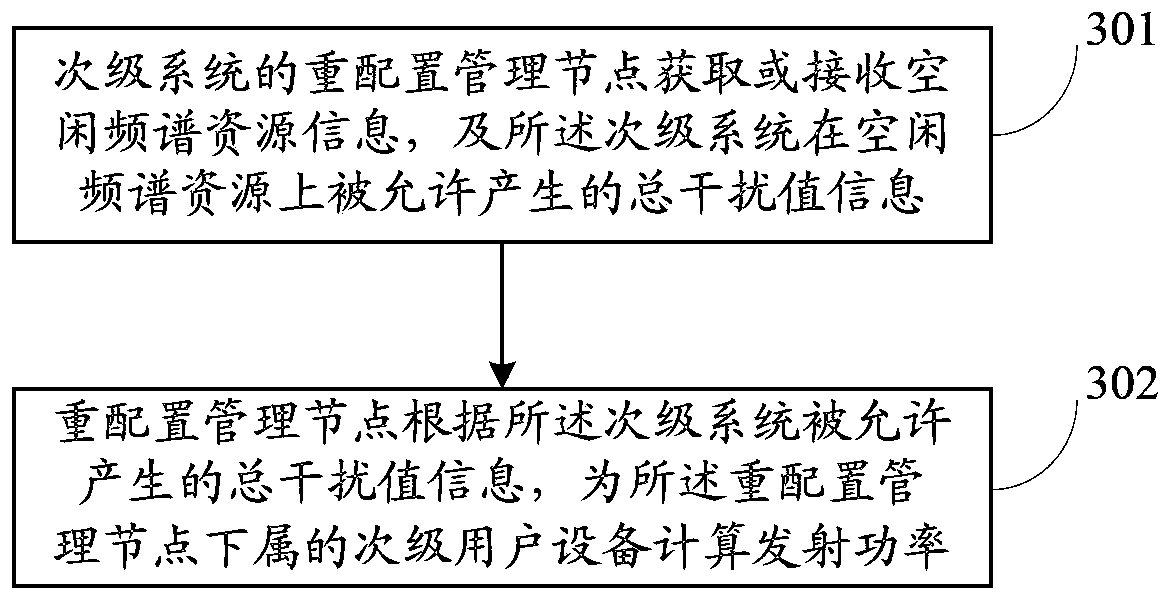Disturbance allocation method, system, database and reconfiguration management node
一种管理节点、分配方法的技术,应用在认知无线电领域,能够解决很难满足次级系统业务连续性、系统稳定性影响、时延不可控等问题
- Summary
- Abstract
- Description
- Claims
- Application Information
AI Technical Summary
Problems solved by technology
Method used
Image
Examples
Embodiment 1
[0138] When there is no working secondary system on the target TVWS spectrum, the secondary system reconfiguration management node allocates the power determination scheme of the TVWS spectrum resource to a base station under it. In the scheme, the CCP is used as the reconfiguration management node for description. Detailed process such as Figure 4 As shown, it is described in detail below:
[0139] Step 401: base station BS 1 Initiate a TVWS spectrum resource application to the secondary system central control node (CCP);
[0140] Concrete, BS 1 Send its own location information, and related capabilities or resource requirements information, such as: supported operating frequency range of 470-560MHz, bandwidth of 5MHz, expected transmission power of 30dBm, etc., to the CCP.
[0141] Step 402: CCP sends TVWS spectrum resource request information to the database;
[0142] Step 403: The database feeds back the free spectrum resource information and the maximum interference v...
Embodiment 2
[0148] When there is a working secondary system on the target TVWS spectrum, the secondary system reconfiguration management node allocates the transmit power scheme of the spectrum to the subordinate base stations. In this embodiment, the secondary system reconfiguration management node initiates a resource request to the database together after a period of time for subordinate base station resource applications. The detailed process is as follows: Figure 5 As shown, it is described in detail below:
[0149] Step 501: base station BS 1 、BS 2 successively to the central control node CCP of the secondary system where it is located 1 Initiate TVWS spectrum resource application;
[0150] Specifically, each base station reports relevant information separately, so that the CCP 1 Appropriate resources can be allocated. BS 1 Put your own location information, and related capabilities or resource requirements information, such as: BS 1 The supported operating frequency range i...
Embodiment 3
[0161] When multiple secondary systems use the same TVWS spectrum resources at the same time, the database allocates the allowable interference value for the multiple secondary systems based on the secondary system attributes. The signaling process is as follows: Figure 6 As shown, it is described in detail below:
[0162] Step 601: base station BS 1 、BS 2 and BS 3 Reconfigure the management node CCP to the secondary system to which it belongs 1 、CCP 2 Send a spectrum resource request;
[0163] Specifically, each base station reports relevant information respectively, so that the CCP can allocate appropriate resources. BS 1 、BS 2 belongs to CCP 1 : BS 1 、BS 2 Send their respective location information, and related capabilities or resource requirements information, such as: supported operating frequency range of 470-560MHz, bandwidth of 5MHz, expected transmission power of 40dBm, etc. to the CCP 2 ;BS 3 Send your own location information, related capabilities or re...
PUM
 Login to View More
Login to View More Abstract
Description
Claims
Application Information
 Login to View More
Login to View More - R&D
- Intellectual Property
- Life Sciences
- Materials
- Tech Scout
- Unparalleled Data Quality
- Higher Quality Content
- 60% Fewer Hallucinations
Browse by: Latest US Patents, China's latest patents, Technical Efficacy Thesaurus, Application Domain, Technology Topic, Popular Technical Reports.
© 2025 PatSnap. All rights reserved.Legal|Privacy policy|Modern Slavery Act Transparency Statement|Sitemap|About US| Contact US: help@patsnap.com



